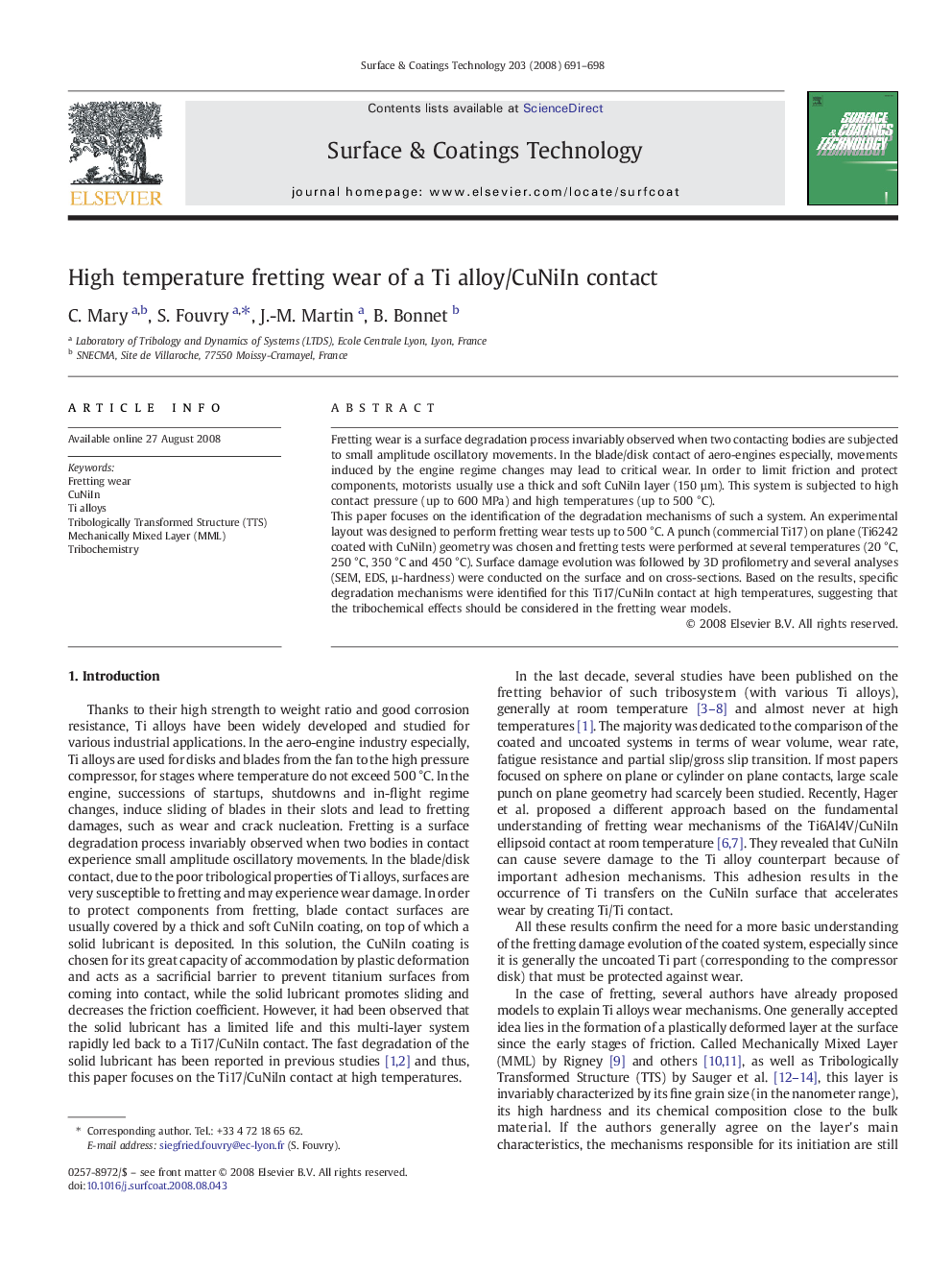| Article ID | Journal | Published Year | Pages | File Type |
|---|---|---|---|---|
| 1660025 | Surface and Coatings Technology | 2008 | 8 Pages |
Fretting wear is a surface degradation process invariably observed when two contacting bodies are subjected to small amplitude oscillatory movements. In the blade/disk contact of aero-engines especially, movements induced by the engine regime changes may lead to critical wear. In order to limit friction and protect components, motorists usually use a thick and soft CuNiIn layer (150 µm). This system is subjected to high contact pressure (up to 600 MPa) and high temperatures (up to 500 °C).This paper focuses on the identification of the degradation mechanisms of such a system. An experimental layout was designed to perform fretting wear tests up to 500 °C. A punch (commercial Ti17) on plane (Ti6242 coated with CuNiIn) geometry was chosen and fretting tests were performed at several temperatures (20 °C, 250 °C, 350 °C and 450 °C). Surface damage evolution was followed by 3D profilometry and several analyses (SEM, EDS, µ-hardness) were conducted on the surface and on cross-sections. Based on the results, specific degradation mechanisms were identified for this Ti17/CuNiIn contact at high temperatures, suggesting that the tribochemical effects should be considered in the fretting wear models.
